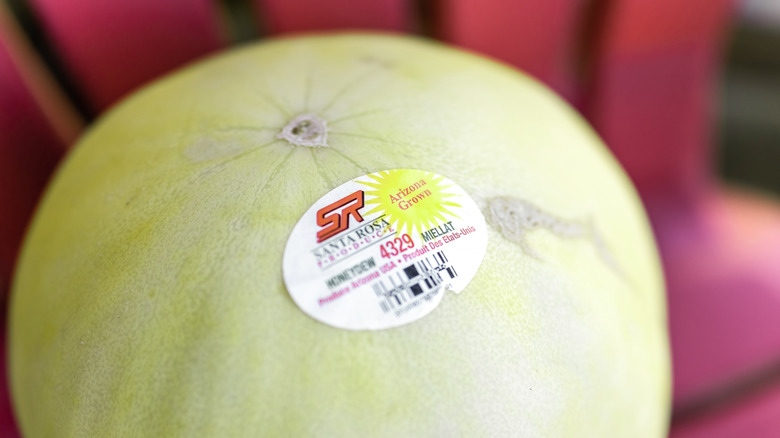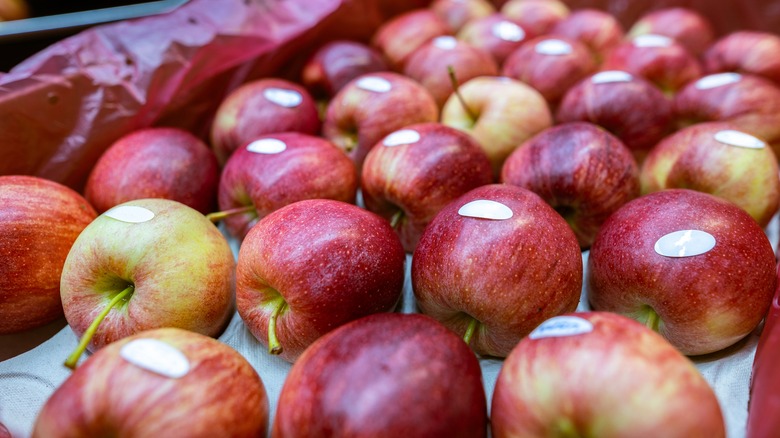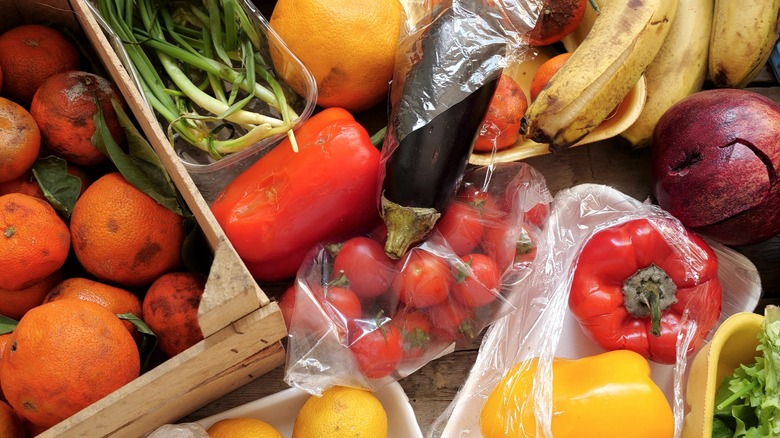What Happens If You Accidentally Eat A Fruit Sticker?
When you go to the grocery store, most of the produce is labeled with a sticker. These stickers provide all sorts of useful information, including a barcode and identification code, whether the product is certified organic or genetically modified, and perhaps even where it was grown. That's all well and fine, but then the moment comes when you take a big bite of an apple and realize you never removed the sticker. Now what?
Fortunately, these stickers and their adhesives are also regulated by the FDA, and accidentally eating one isn't going to hurt you. With that being said, these stickers are commonly made from plastic in order to allow for flexibility and water resistance, so they aren't exactly digestible, nor are they biodegradable. Moral of the story: The FDA has ensured that produce stickers will pass safely through your digestive system if you happen to eat one, but you should always double-check your fruits and veggies before you take a bite.
The food industry is looking into produce sticker alternatives
In addition to not exactly being digestible, standard produce stickers have the problem of not being compostable or recyclable. As such, most (if not all) produce stickers wind up in landfills, contributing to the contamination of soil and water.
Currently, inventors are experimenting with alternative labeling methods, including compostable stickers, dissolvable stickers, and even laser etching. However, each of these has its own drawbacks, with the largest being cost. Laser etching equipment, for instance, is very expensive and therefore inaccessible to most producers. Similarly, compostable stickers can cost double that of a plastic sticker, prompting most businesses to go with the cheaper option.
On the other hand, dissolvable stickers -– which have been designed to turn into a soap for cleaning your produce of pesticides, viruses, and wax -– seem to have come to a similar standstill. What's more, some experts have claimed that the soap doesn't work all that well, potentially discouraging stores from making the switch.
The problem with produce stickers is getting stickier
As previously mentioned, many produce stickers end up in landfills, but some take a detour to a composting plant. For instance, you might forget to remove a sticker after peeling and eating a mango, tossing the scraps into a composting bin. Next thing you know, they're carted away for sorting and composting.
Unfortunately, composting facility equipment isn't advanced enough to detect stickers, let alone remove them from scraps, and employees don't have nearly enough time to remove stickers by hand. After all, some facilities handle nearly 2,000 tons of material each year.
At the end of the day, most of the stickers accidentally sent through a composting facility are dispersed along with the compost, winding up at farms, nurseries, and garden centers. In a tragic circle of life, the remains of those stickers could potentially contaminate the very ground used to grow new produce –- produce that will soon be labeled with yet another safe-to-eat but environmentally unfriendly plastic sticker.



